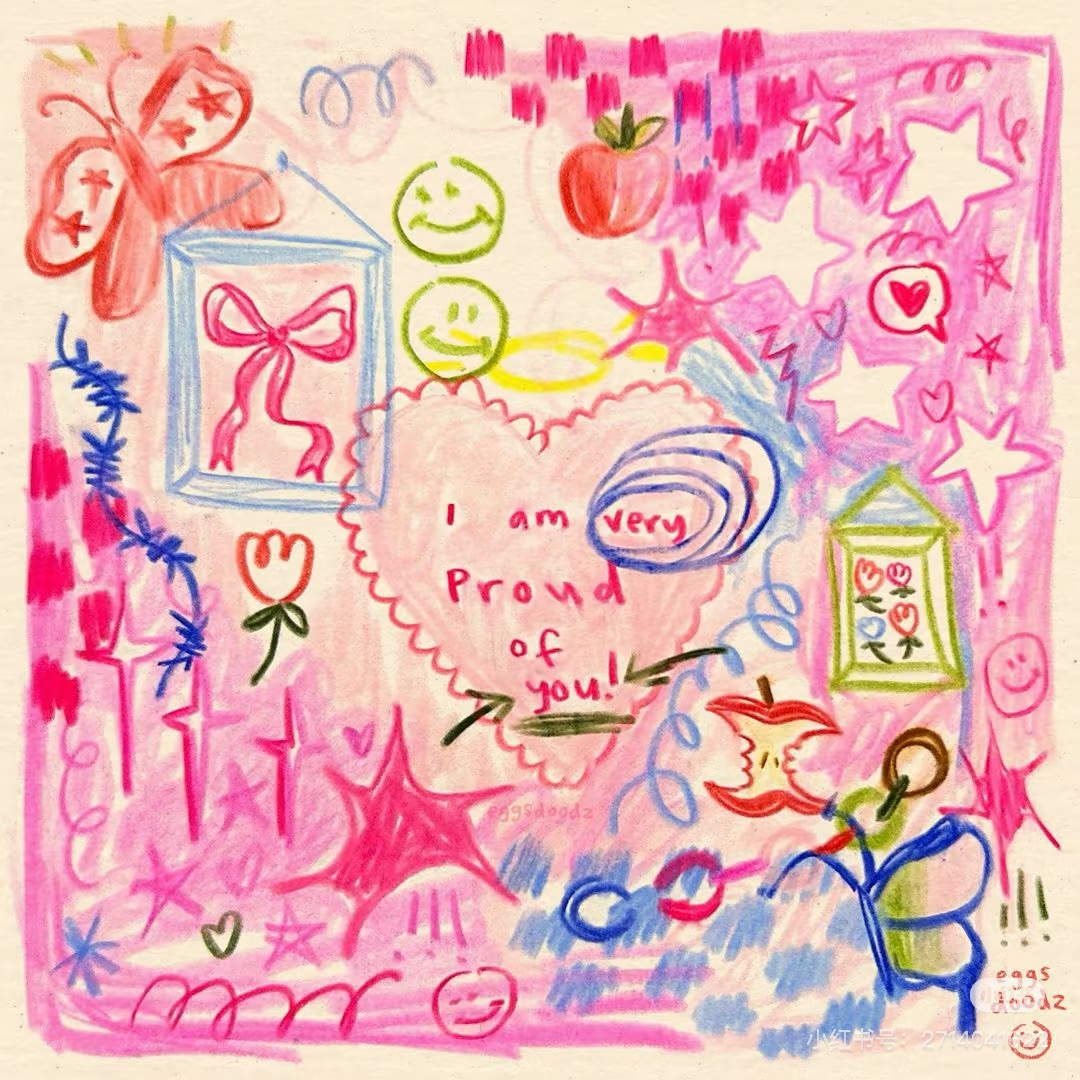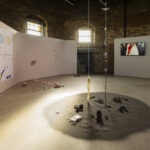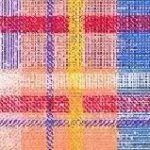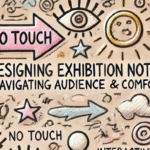Pre-session foreword
In our group practice, we have adopted a rotating model of leadership—each week, a different member takes on the role of organising and chairing the meeting. This ensures that responsibility, visibility, and influence are shared rather than centralised. Every member is expected not only to participate in discussion but also to contribute ideas, give feedback, and co-construct the direction of the conversation.
This structure resonates with Adam Benmakhlouf’s reflections in Week 9 (Publishing as Curating), where he emphasised the importance of collective goals and non-hierarchical authorship in collaborative creative practices. Our group doesn’t just meet to divide tasks—we actively test what it means to curate collectively, not just conceptually but operationally.
However, this also reveals the complexities of such a model. While rotating roles promote equity, they also require a high level of communication, emotional labour, and mutual trust. Not everyone is equally comfortable leading, and decision-making can become slow or unclear. In that sense, our practice also mirrored the tensions within collaborative authorship: who gets to shape the agenda, whose voice carries weight, and how consensus is actually achieved.
By organising ourselves in this way, we weren’t just preparing our own proposals—we were also reflecting on the politics of working together, and how curating can be both a relational and ethical practice.
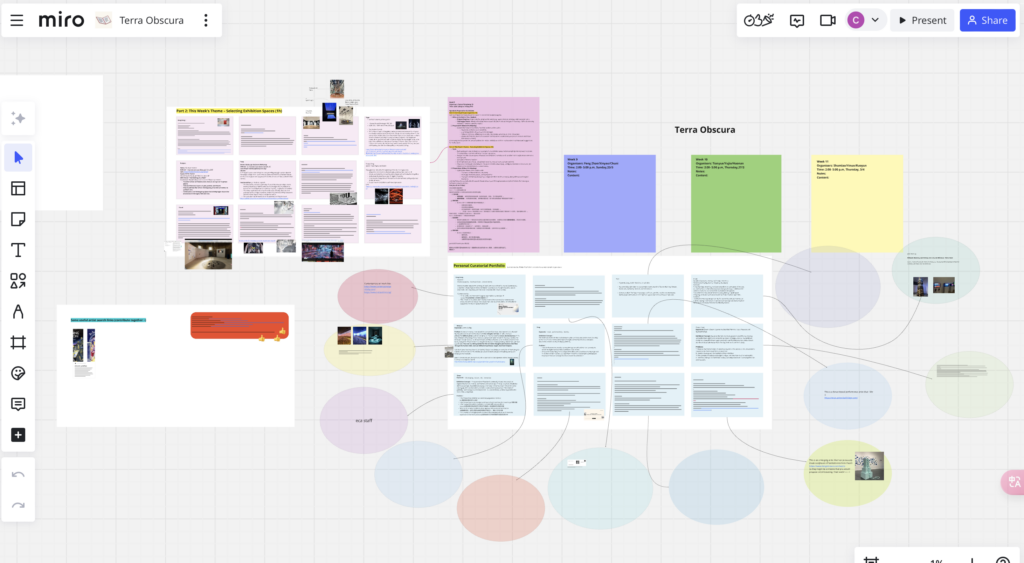
Session organisers: Harry, Kangkang, Xi
Time: 14 March 2025 (Friday) 14:00 – 17:00
Main Discussion: Individual Project Progress & Exhibition Space Selection
This image shows a general overview of this week’s miro board, which each member prepared well in advance of the start of the meeting for sharing during the meeting.
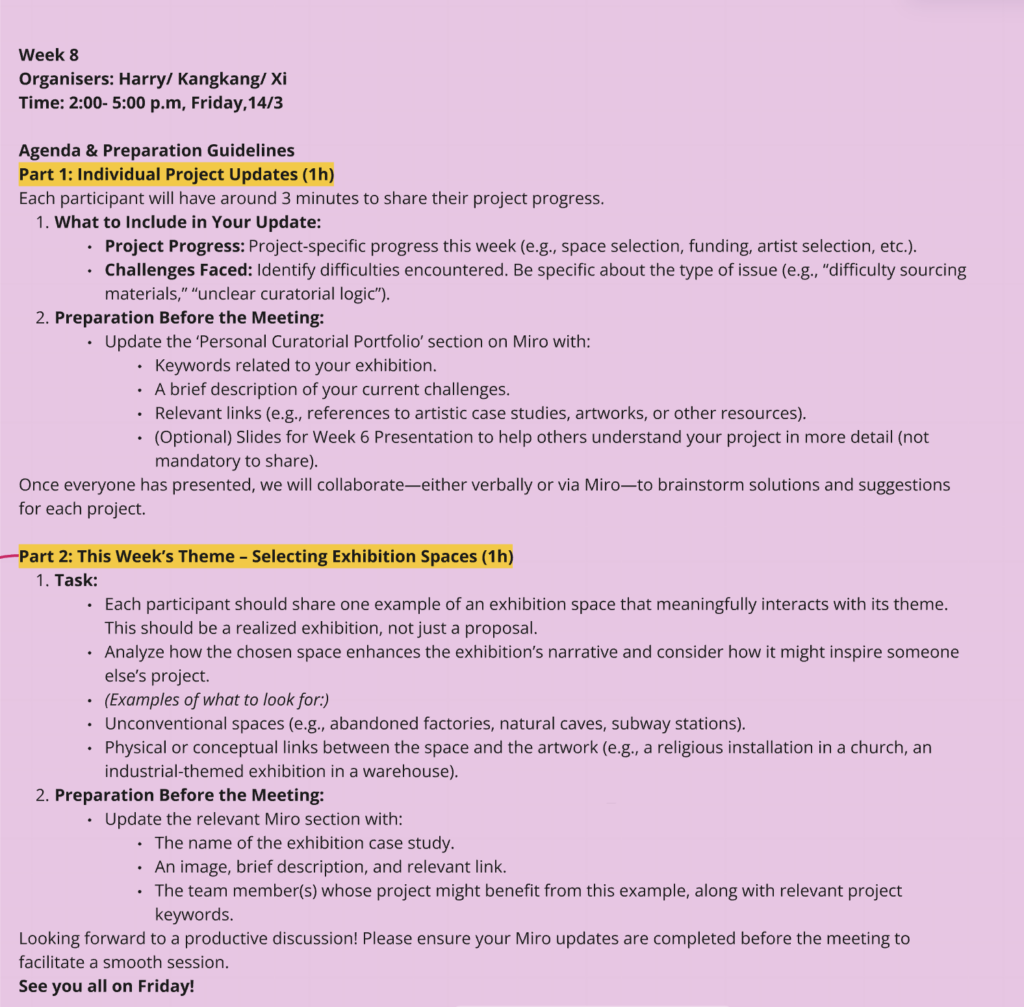
Part I: Individual Project Updates (1 hour)
Each member shares about 3 minutes of project progress, including:
1. project progress:
– Selection of exhibition space
– Status of fund-raising
– Selection of artists and other related matters
2. Major challenges encountered:
– Funding issues: Many members were constrained by budgetary constraints in their search for exhibition venues and had difficulty in renting the desired space, and needed to look for more feasible alternatives, such as internal resources of the university, support from arts organisations, or exhibitions in public venues.
– Venue selection dilemma: Some members originally envisioned exhibition spaces due to cost or feasibility issues, and needed to adjust their thinking and find new types of spaces.
– Artist resource issues: Most of the artists initially selected were well-known artists whose works were not only costly, but also might not be suitable for the curatorial concept. Therefore, people need to re-collect emerging artists that are more in line with the theme to ensure the integrity of the curatorial logic.
3. Mutual referrals:
– We recommended to each other examples of art exhibitions that fit our respective curatorial themes and helped to broaden each other’s curatorial ideas.
– We discussed different types of exhibitions, including interactive, immersive, multi-media, performance art, etc., to help us think about how to better convey our curatorial ideas.
– Websites for finding emerging artists were shared, such as
Loughborough university: https://sdcashow2023.lboro.ac.uk/course/fine-art/
University of Edinburgh Degree show (ECA): https://www.graduateshow.eca.ed.ac.uk/#
University college London (Central Saint martins): https://www.arts.ac.uk/colleges/central-saint-martins/whats-on-at-csm/degree-show- archive
University of London (Goldsmiths): https://sites.gold.ac.uk/art-degree-shows/ba-fine-art-2024/
Nottingham Trent University: https://sites.gold.ac.uk/art-degree-shows/ba-fine-art-2024/
and ArtRabbit, New Contemporaries, Emerging Artist Platform, etc., so that people can find suitable artists more efficiently.
4. Questions that remain unanswered:
– Although some doubts were answered in this session, there are still a few core questions that have not been properly dealt with and we will ask the tutors for advice in the next session:
– How to obtain more cost-effective exhibition space and what are the possible organisations or grants to apply for?
– Is there a more systematic way to screen and liaise with emerging artists to improve the actionability of curation?
– For the issue of financial support, is it possible to reduce budgetary pressure through co-curatorial or collaborative organisations?
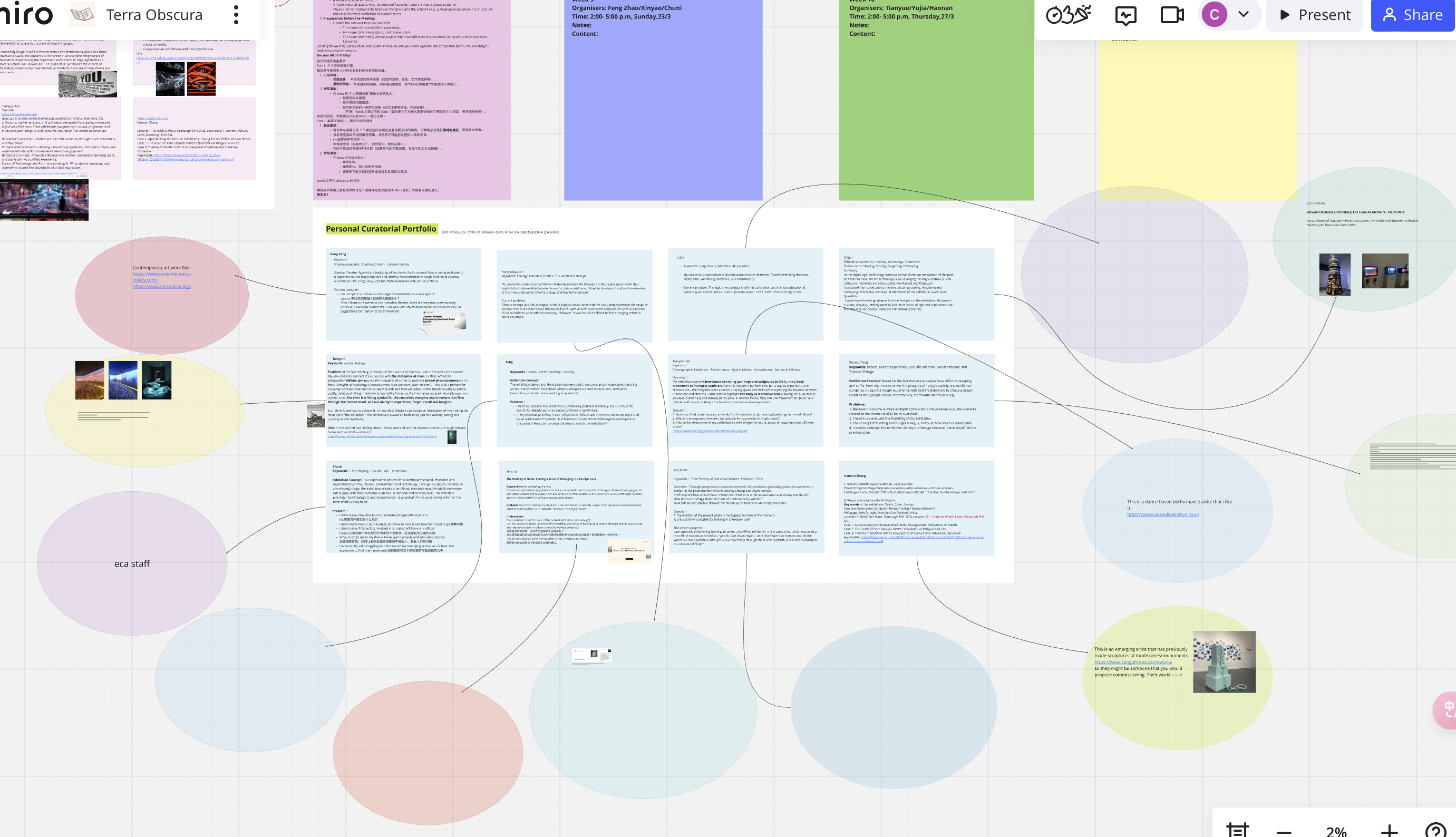
Part 2: Theme of the Week – Selecting an Exhibition Space (1 hour)
Task Objective:
– Discuss how to select a space that matches the theme of the exhibition and analyse its role in enhancing the exhibition narrative.
– Explore how non-traditional exhibition spaces can impact the visitor experience, incorporating case studies.
Discussion Highlights:
– Unconventional Exhibition Spaces: discusses the possibilities of unconventional exhibition spaces such as abandoned factories, caves, and underground stations, and how the characteristics of the space itself can be used to enhance the narrative of the exhibition.
– Conceptual links between exhibition spaces and works: for example, whether an industrial-themed exhibition would be appropriate in an old factory, or whether works about religion and faith would be more appropriate in a church.
Cases discussed include:
1. The Paper Factory (London) – themes of industry, transformation, re-imagining gendered spaces
2. Strange Field Exhibition Space (Glasgow) – focusing on ecology and accessibility
3. Edinburgh Sculpture Workshop (Edinburgh) – a long term collaboration with Edinburgh College of Art to support emerging artists.
4. Xiyou Digital Art Centre – combining light and shadow technology with digital art
5. National Portrait Gallery of Scotland – a curatorial model that combines the modern with the classical
6. Barbara Kruger: Thinking of You, I Mean Me, I Mean You – the interaction of text and space
7. TeamLab: Hybrids – an immersive multimedia art exhibition
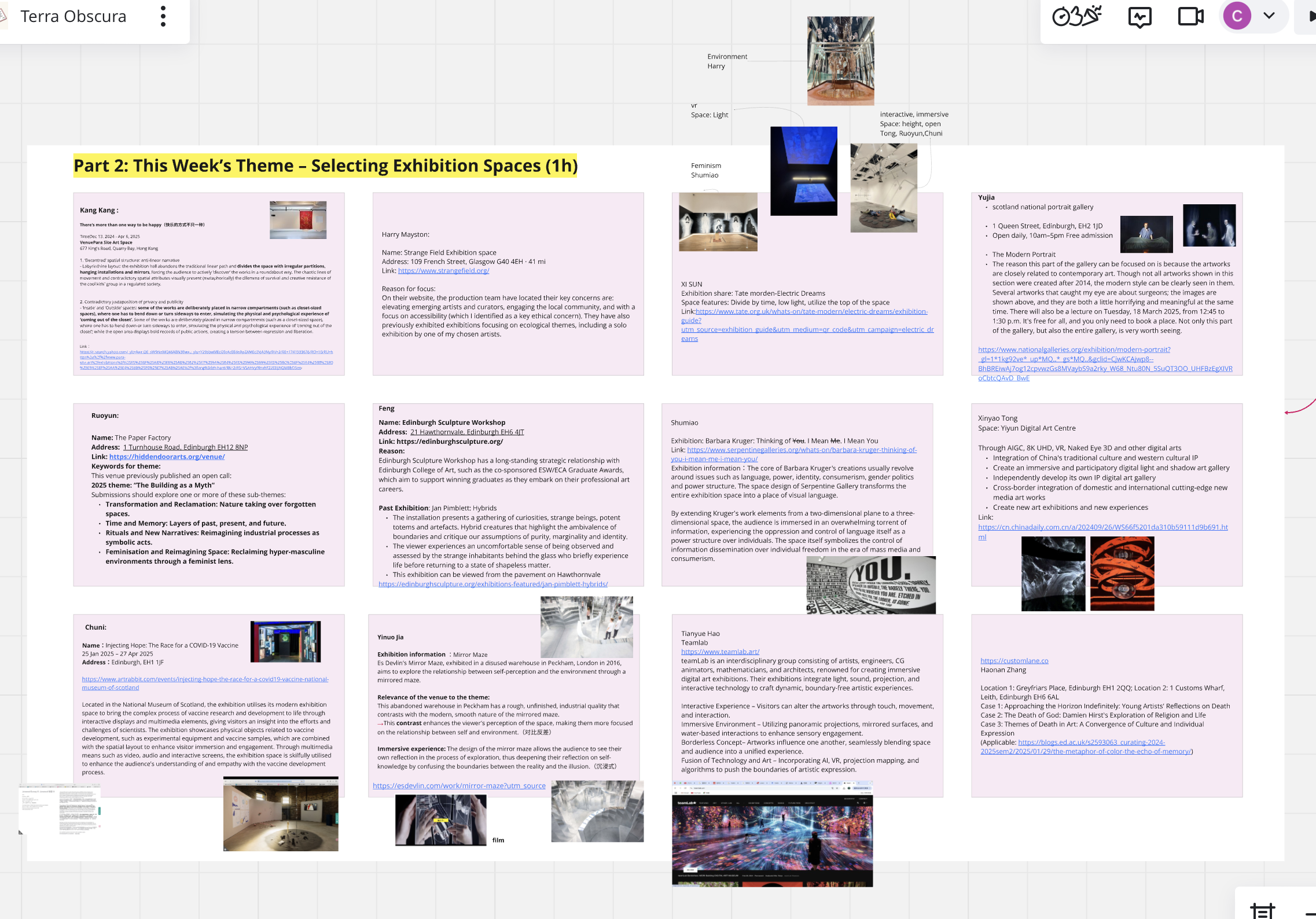
The main questions from the curatorial team members centred on the feasibility of funding and exhibition space,change of artist selection.
The meeting helped to clarify the progress of their individual projects and provided concrete case studies on the choice of curatorial space. They also recommended examples of exhibitions that fit their own themes. Emerging artist resource websites were shared to help resolve artist selection challenges, and the impact of non-traditional exhibition spaces on curatorial narratives was discussed.
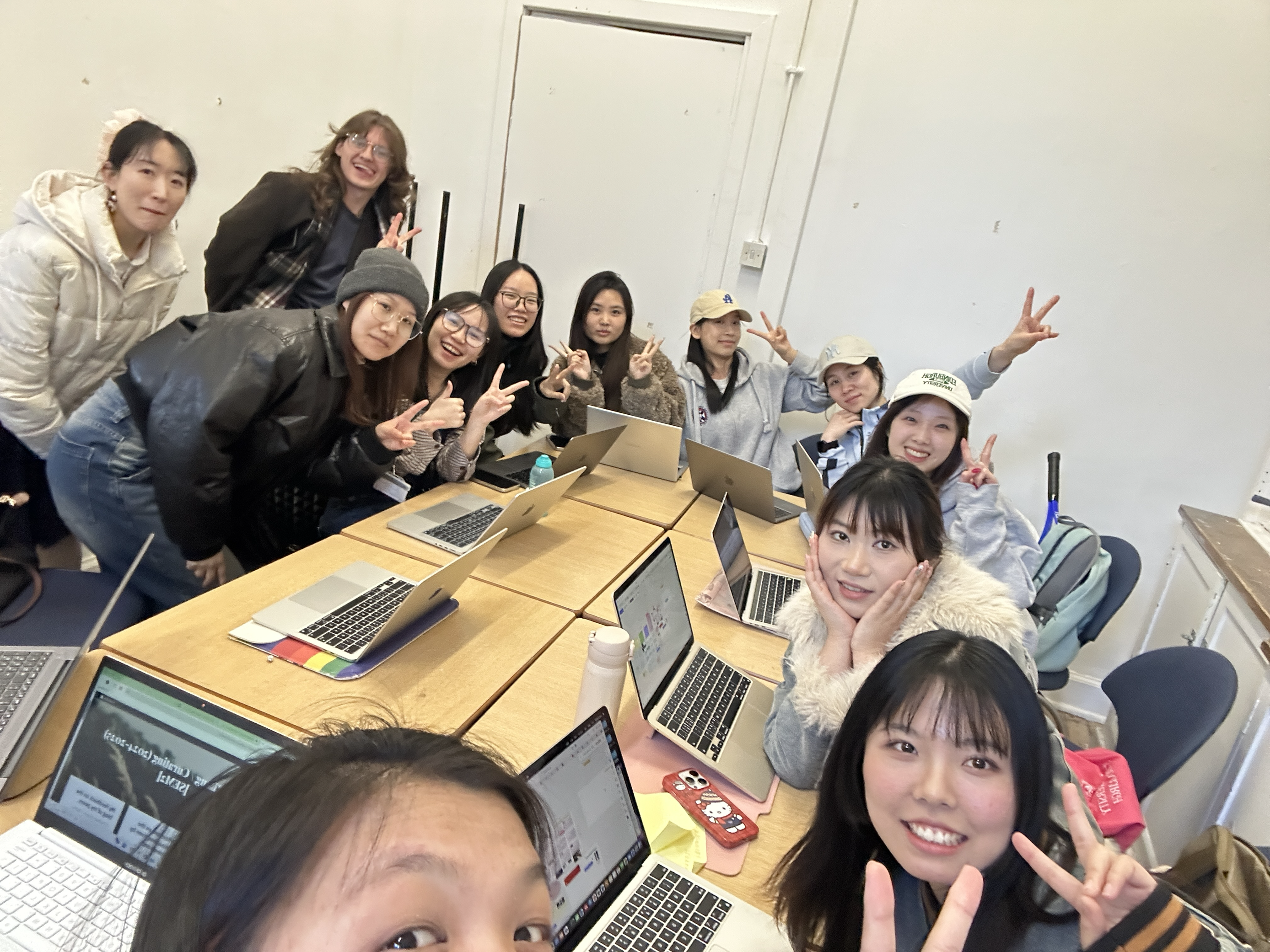
Personal reflections after meeting
Fewer artworks on the theme of life plasticity:
In the course of my research, I realised that the number of artworks on the theme of ‘life’s plasticity’ was much lower than expected. This raises a deeper question: should the theme be continued, or should the curatorial direction be adjusted to make it more realistic and actionable?
– One possible solution is to broaden the definition of the theme and look for more interdisciplinary works, such as bio-art, technological art, or installations that philosophically explore the changes in human life.
– Another idea is to explore the plasticity of life in different social contexts from different cultural perspectives, which may lead to richer resources.
AR-guided exhibitions:
At present, the AR (Augmented Reality) guided tour exhibition I envisioned still faces many problems at the practical level, such as:
– Technical support: How to find a suitable AR development team? Is there a feasible off-the-shelf platform that can be utilised instead of developing it completely on its own?
– Audience experience: Can AR really enhance the exhibition experience, or will it weaken the audience’s attention to the works themselves? How to balance the relationship between technology and art?
– Budget and resources: AR is expensive to develop, is it possible to seek sponsorship from art organisations or technology companies?
This part still needs more in-depth research and practical exploration, and it may be necessary to refer to some existing cases of AR art exhibitions and find relevant technical support.
Reflection on the collective curatorial
– The issues of funding, artist selection and exhibition space may seem to be practical problems, but at a deeper level, they also reflect the reality of contemporary curatorial dilemmas in the face of limited resources.
– At present, many emerging curators try to break through the traditional exhibition mode, such as combining technology, choosing non-traditional space, and trying new curatorial narratives, but these innovations are accompanied by more realistic challenges.
– How to find a balance between academics, innovativeness and executability in future curation is a question we need to keep thinking about after this discussion.
week 8 meeting © 2025 by Chuni Mao is licensed under CC BY-SA 4.0
This week’s miro board © 2025 by Chuni Mao is licensed under CC BY-SA 4.0
Agenda & Preparation Guidelines for collective meeting © 2025 by Chuni Mao is licensed under CC BY-SA 4.0
Part 1: Individual Project Updates (1h) © 2025 by Chuni Mao is licensed under CC BY-SA 4.0
Part 2: This Week’s Theme – Selecting Exhibition Spaces (1h) © 2025 by Chuni Mao is licensed under CC BY-SA 4.0
Group photo of the meeting © 2025 by Chuni Mao is licensed under CC BY-SA 4.0
